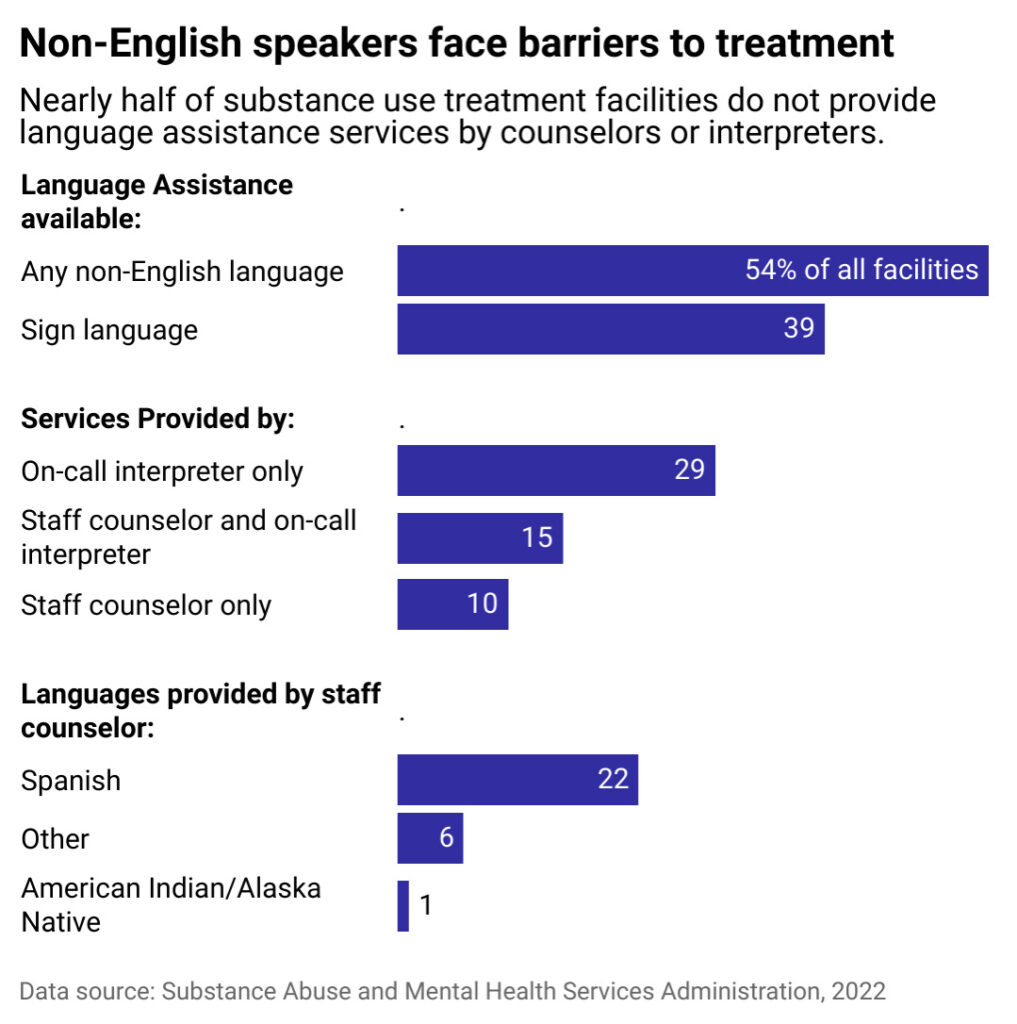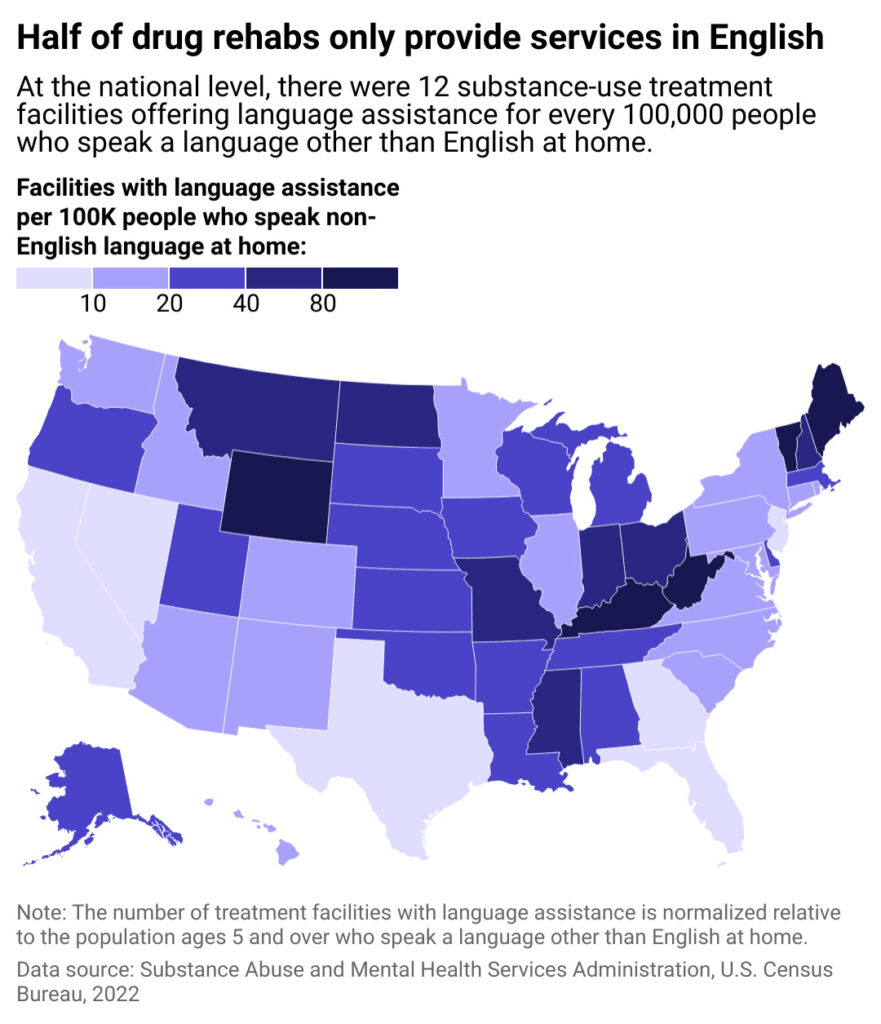The Growing Demand for Bilingual Substance Use Counselors in the U.S.
Counseling Schools Search
When you click on a sponsoring school or program advertised on our site, or fill out a form to request information from a sponsoring school, we may earn a commission. View our advertising disclosure for more details.
Society’s focus on destigmatizing substance use and mental health conditions while providing better treatment plans has helped millions of people pursue care. Still, counseling is tough for some because they can’t find anyone who understands or speaks their language.
Counseling Schools measured gaps in substance use disorder care for non-English speakers living in the United States by examining data from the Substance Abuse and Mental Health Services Administration’s annual National Substance Use and Mental Health Services Survey, the most recent of which was administered in 2022.
The racial and ethnic makeup of the country is changing. The white-only population decreased 6 percentage points to just under 58 percent between 2010 and 2020, according to the Census Bureau. Yet, while communities of color populations are growing, barriers to substance abuse and mental health care remain.
Black, Hispanic, and American Indian people are more likely to be uninsured, which can make care unaffordable due to high out-of-pocket costs. Black and Hispanic people are also more likely to rely on public transportation, which can “lead to missed or rescheduled appointments, delayed care, and poor medication adherence,” according to a 2023 study in JAMA. When Black Americans do seek out mental health care, they’re more likely met with “poor or downright harsh treatment in mental healthcare settings.” Language barriers also represent a significant obstacle to treatment for substance abuse and mental health.
Nearly 22 percent of people ages five and older living in the U.S. speak a language other than English at home, with 61 percent speaking Spanish. Yet just 54 percent of substance use facilities provide language assistance services by a staff counselor or on-call interpreter. Seventy-three percent of mental health facilities and 78 percent of combined substance use and mental health facilities provide language assistance services. However, when on-call interpreters provide bilingual services, treatment may be less effective.
Keep reading to learn more about how a lack of bilingual counselors is limiting access to substance abuse care for non-English speakers in the U.S.

The Biggest Language Gaps Are in Substance Use Facilities
Interpreters can improve substance use treatment for patients and clinicians, Alcoholism Treatment Quarterly notes. By speaking a language the patient is more comfortable with, interpreters can help patients feel less isolated and supported in their treatment.
Interpreters can also give clinicians cultural insight, which can shape better approaches to treatment. However, substance use clinicians have noted the potential for vital information to be lost in translation. The presence of a third party can also detract from a clinician’s ability to build an active therapeutic alliance with their clients.

Access to Care for Non-English Speakers Varies by State
Access to bilingual rehab services can be difficult, even in states with large populations. Texas, which has a sizeable Hispanic population, has just 300 treatment facilities, or just under 58 percent of the state’s facilities, that provide language services.
Some states have noticed the need for more bilingual services, particularly services in Spanish. Organizations in New York aim to improve bilingual access by expanding its use of interpretation services, giving providers cultural training, and increasing telehealth services to reduce stigma.
The federal government has also set up a plan to improve language access to content from the Department of Health and Human Services within the next five to eight years to improve mental health and substance use services for U.S. residents.
People will have access to interpreter services via telephone; grant funds will assist agencies in offering more language access services; and multiple language options will be provided online, in public outreach content and programming, and benefit information.

